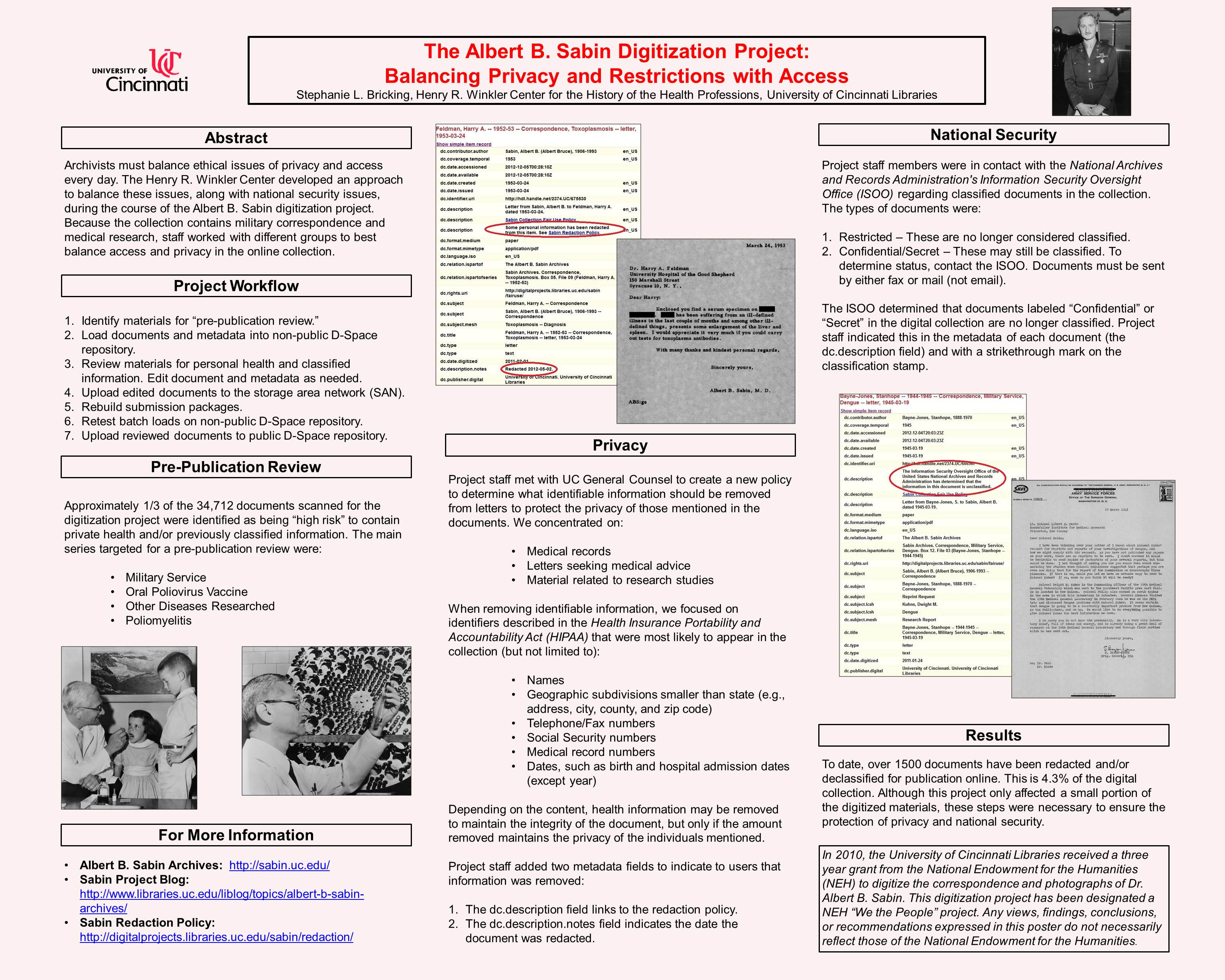At the recent 2013 Society of American Archivists’ annual meeting in New Orleans, Louisiana, I presented a poster on the final results of the Albert B. Sabin digitization project. Several archivists stopped by to discuss the poster, particularly because they were curious about the way project staff handled documents that contained sensitive information. Many of those that stopped by were at archives in similar positions as the Winkler Center, trying to figure out the best way to balance privacy and access.
However, one person stopped by because the Mount Sinai Archives recently processed the collection of Horace L. Hodes, and Dr. Sabin’s name came up several times in the collection. Of course, I was curious, so I checked out Dr. Hodes’s finding aid on their website. According to the biographical note, Dr. Hodes worked on Japanese B encephalitis during World War II and later was on a Congressional panel for American Academy of Pediatrics that testified on the Salk vaccine.
Doing a search for Dr. Hodes in the digital collection resulted in some interesting information, especially from interview transcripts between Dr. Sabin and Dr. Saul Benison. One interview on October 4, 1975, discussed a Japanese B encephalitis outbreak during WWII:
Now, the armed forces on Okinawa then suddenly were faced with an outbreak of encephalitis in the civilian population. At least 80 cases and 22 deaths occurred in civilians between about 7 July and 30 July. Well, one couldn’t be sure. One could suspect that it was Japanese encephalitis, but one couldn’t be sure. And of course, surgeon general’s office was anxious to take all possible steps for the protection of the approximately a quarter of a million men who were over there. The navy had a very excellent research unit, naval medical research unit number 2. I think ti was called NAMRU 2, on Guam, under the command of Captain Rivers, our old friend, Dr. Tom Rivers. And he had some very good people with him. One of them was Lieutenant Hodes. Horace Hodes, an old friend from the Rockefeller Institute days.
An earlier interview (March 8, 1975) between Sabin and Benison also discussed Dr. Hodes, as well as other scientists who were at the Rockefeller Institute. When discussing Dr. Leslie Webster, Dr. Sabin referred to Dr. Hodes, saying, “Horace Hodes was another one who came from Johns Hopkins in the department of pediatrics and worked with Webster and ended up as a very eminent pediatrician, academic pediatrics. There is no question that the problems they chose, and some of the things they did — although they brought their own contributions to it — were greatly influenced by Webster.”
I was glad to learn about another archival collection that was related to the Sabin papers. If you know of another collection that contains papers from Dr. Sabin, please contact chhp@uc.edu and let us know!
If you are interested in learning more about the connection between the two scientists, feel free to browse the online collection of the Albert B. Sabin Archives, check out the Sabin finding aid, or visit the inventory for the Horace L. Hodes papers. Finally, if you would like a PDF version of the poster I presented at the SAA annual meeting, please contact chhp@uc.edu.
In 2010, the University of Cincinnati Libraries received a $314,258 grant from the National Endowment for the Humanities (NEH) to digitize the correspondence and photographs of Dr. Albert B. Sabin. This digitization project has been designated a NEH “We the People” project, an initiative to encourage and strengthen the teaching, study, and understanding of American history and culture through the support of projects that explore significant events and themes in our nation’s history and culture and that advance knowledge of the principles that define America. Any views, findings, conclusions, or recommendations expressed in this blog do not necessarily reflect those of the National Endowment for the Humanities.

